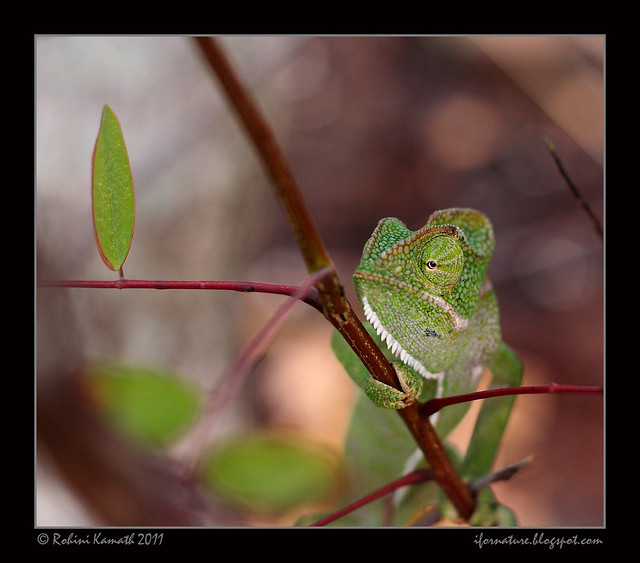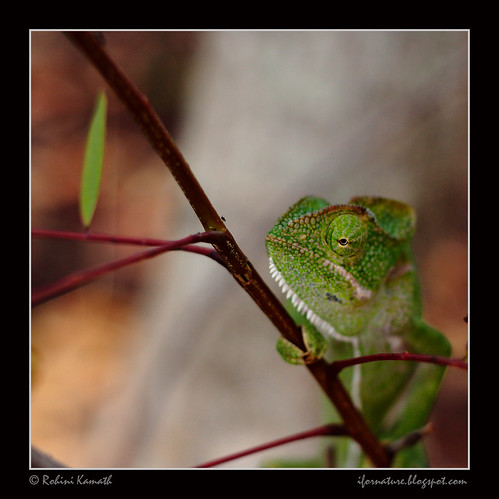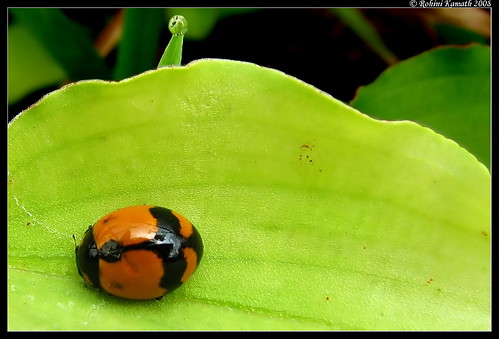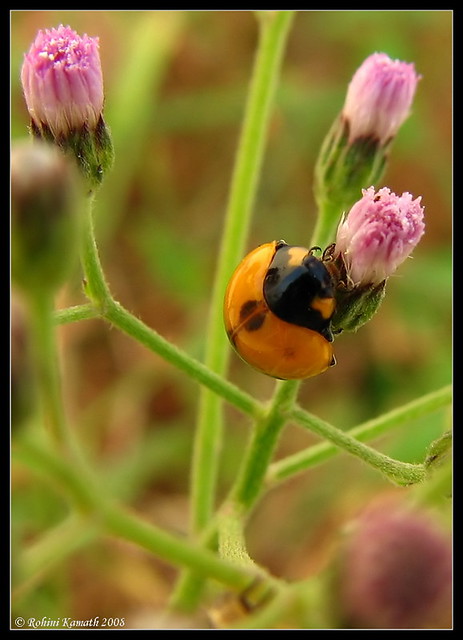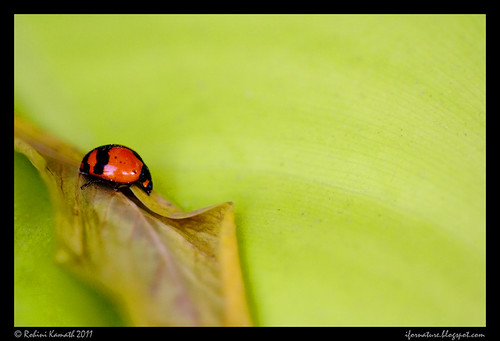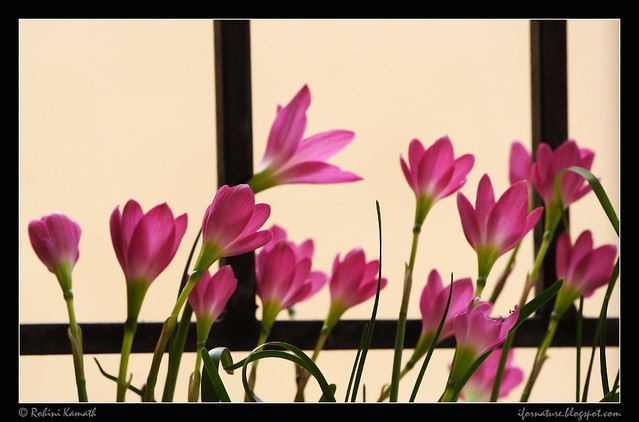
Rain Lily Rosea
The wonderful weather we have been having with frequent rains caused a rather surprising riot of color in my balcony one morning. Almost out of nowhere and with no warning there were a multitude of rainlily buds! Unfortunately, they decided to flower in fantastic profusion and all together on a weekday. This meant ofcourse that we would be late to work. :(
I first saw the rainlily in houses in Indiranagar where they were used as hedging or in pots on the boundary wall. They are also common in office campuses. Any plant that grows in corporate campuses is easy to grow. So if you are looking for additions to your garden, first look in your office.
I got mine (Pink and Yellow) from Madeena Nursery on Sarjapur road - a wonderful sprawling nursery with lot of variety and very helpful staff. Its been about a year and this was the first time they have bloomed in unison. The white blooms very often, the pink rarely but regularly, the yellow being the last.

Colourful spring morning - I envy my neighbour's view
The flowers will turn to face the sun. In my case that means they turn towards my neighbour's balcony. :(
How it got the name
The botanical name - Zephyranthes is a genus of species in the Amaryllis family (subfamily Amaryllidoideae). Family: Amaryllidaceae (amarlyllis family)
Zephyrus, or just Zephyr (Greek: Zéphuros, "the west wind"), in Latin Favonius, is the Greek god of the west wind. The gentlest of the winds, Zephyrus is known as the fructifying wind, the messenger of spring.
The blooming of the flowers are said to herald the onset of spring. In our case in India, however, they herald the monsoon season and the end of hot summers. Hence the common name - rain lily. They bloom during the rains.
Meet the family
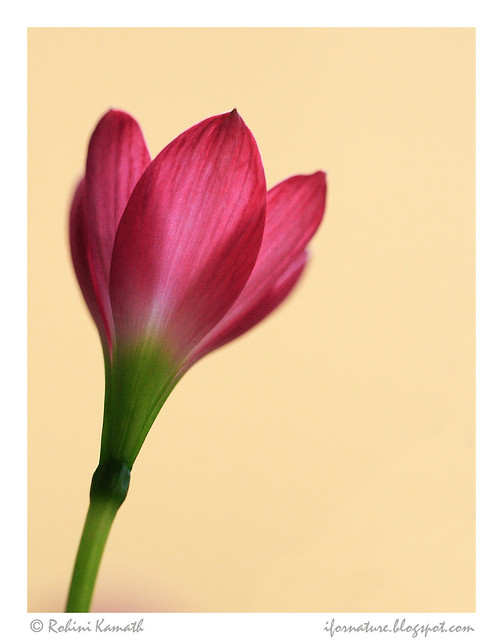
The Rain Lily Rose - closeup
Zephyranthes rosea - Rain Lily Rose
Rose Rain Lily are small flowers that are pink in color with a green base. The flowers are much smaller that of Rain Lily Pink (which is a light pink) and the white and yellow. The throat is distinctly green. Leaf blades are dull green. They are wider and shorter than the pointy spring onion like leaves of the yellow and the white.
Flowers are erect to slightly bent, bright pink in color, funnel-shaped, Flower tube is green, increasing in diameter. Flowering season is March-July.
Pink Confusion
The Z.carinata is called the Pink Rain Lily and is light pink (strawberry milkshake colour) they have larger flowers and have 6 petals. The Rose rain lily has a darker pink (kissan strawberry jam color) Z. rosea blooms are smaller and have greater than 6 petals, sometimes 8.
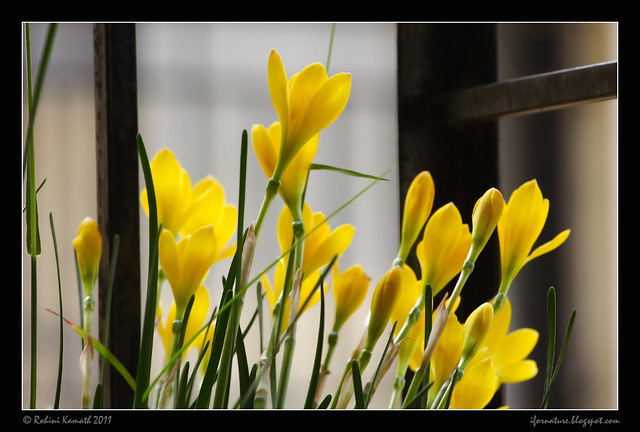
Zephyranthes citrina - The Yellow Rain Lily
Zephyranthes citrina - Yellow Rain Lily
The bright one-inch lemon yellow flowers of this rain lily face upwards and flare open. (Unlike the rosea which never opens out fully).
The leaves are slender and light green and stand erect most of the time, when dry and in need of watering they will droop. The propagation is supposedly by bulbs. (though I have propagated them by seed )
A personal observation: the yellow lily was in bloom for only 2 days, after which it closed completely and started seed production. The pink lasted longer by a day. The white out lasts them all and is in bloom for days on end.
Seed production starts immediately after the flowers are dry, 3 pointed bulbs emerge where the flower was, starting small and eventually getting quite large, as big as a pepper seed. Then it dries and opens. Each pod has 3 stacks of black flat teardrop shaped seeds. Collect and plant, make more lilies:)

Zephyranthes candida - The white rain lily
Zephyranthes candida - Rain Lily white
It is native of the warmer parts of America, also called Fairy Lily. The solitary flowers consisting of 6 pointed petals have sturdier stalks than the yellow.
These are common and very popular, they can be acquired from most nurseries, their leaves are darker green and fatter than the other 2 varieties.
Hippeastrum hybrid - Amaryllis Lily
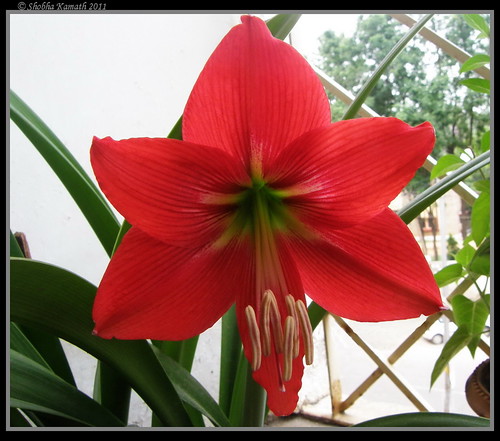 | 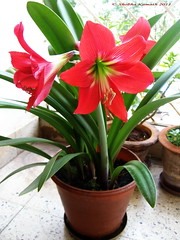 |
These are Mom's lilies
This is my mom's plant and her image of it. I borrowed it from her flickr stream. Hers are blooming too, so if you're looking to acquire these plants, the time is now.
Hippeastrum is a genus of about 70-75 species and 600+ hybrids and cultivars of bulbous plants in the family Amaryllidaceae. They are native to tropical and subtropical regions of the Americas from Argentina north to Mexico and the Caribbean. These plants are popularly but erroneously known as Amaryllis, which is an African genus, in the same family.
They are pretty large compared to the small rainlily and bloom in a set of 4 flowers.
Colors include red, rose, pink, white, orange, yellow and pale green with variations on these including different colored stripes and edges on the petals.
When to Buy
When buying these plants, its best to time your purchase to the blooming period because most nurseries just keep all the varieties close together and cannot assure you of the color of the bloom. The Rosea can be made out easily, but you'll have trouble differentiating between yellow and white.
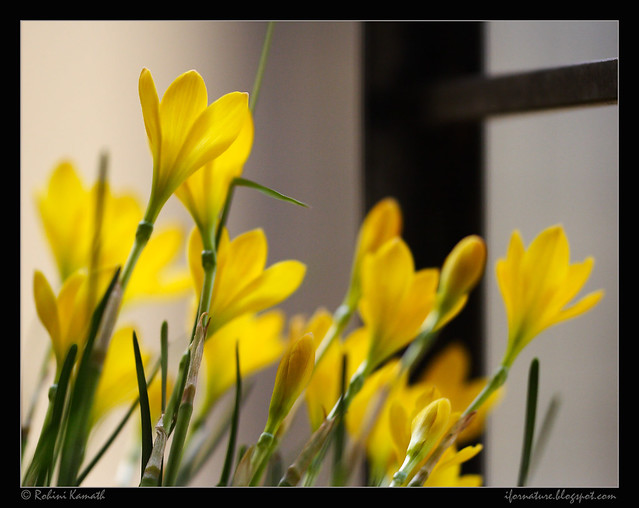
More of the yellow - Cant get enough of them
Growing:
Plant it, give it some water and then forget about it. When the leaves begin to droop a little, water it a bit. While Zephyranthes can stand dry periods, if you want the graceful green leaves to remain, you may need to add some water occasionally. If you let them dry for a week and water them later, the flowering cycle can be triggered.
I found this works best with the white variety, which is very common. The pink and yellow are pretty rare in bangalore and I only found them in this particular nursery.
Zephyranthes do best with a little shade, they can be planted around the base of trees or shrubs in a garden and will serve to hide fallen dried leaves and keep the ground moist by discouraging evaporation.
The flowers of some species are said to have a sweet, pleasant fragrance. I sniffed diligently around all of mine (the things I do for this blog!) - no smell :(
They do well in containers outdoors and in balconies and windows, but not as houseplants. Don't keep them indoors. They can withstand full sun, but you'll have better results if they have a small amount of shade. The pots need not be big or deep. I have 2 varieties in a single long window sill pot, and they co-habit very
Sources:
Shobha Kamath
Wikipedia
Flowers of India
Rain Lily | Garden Guides

